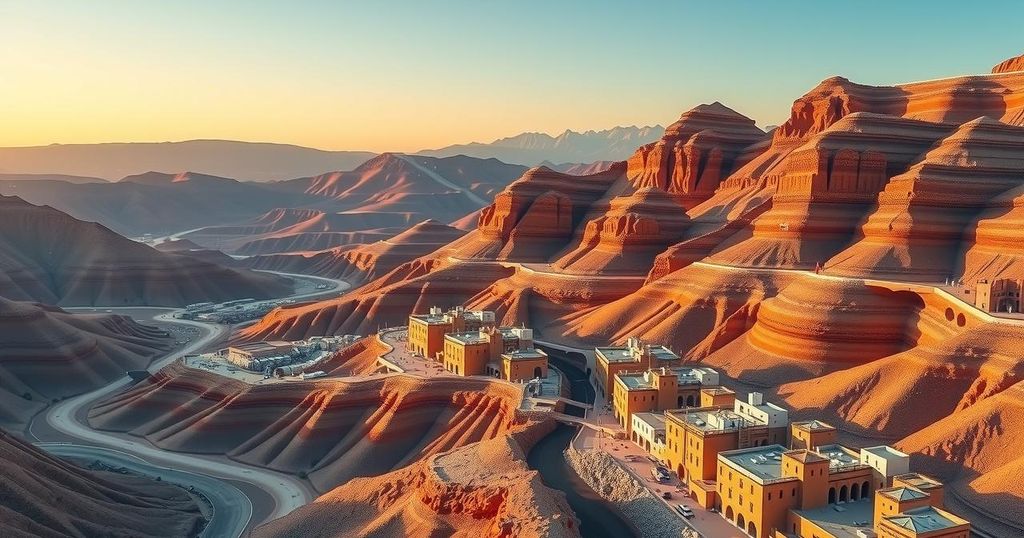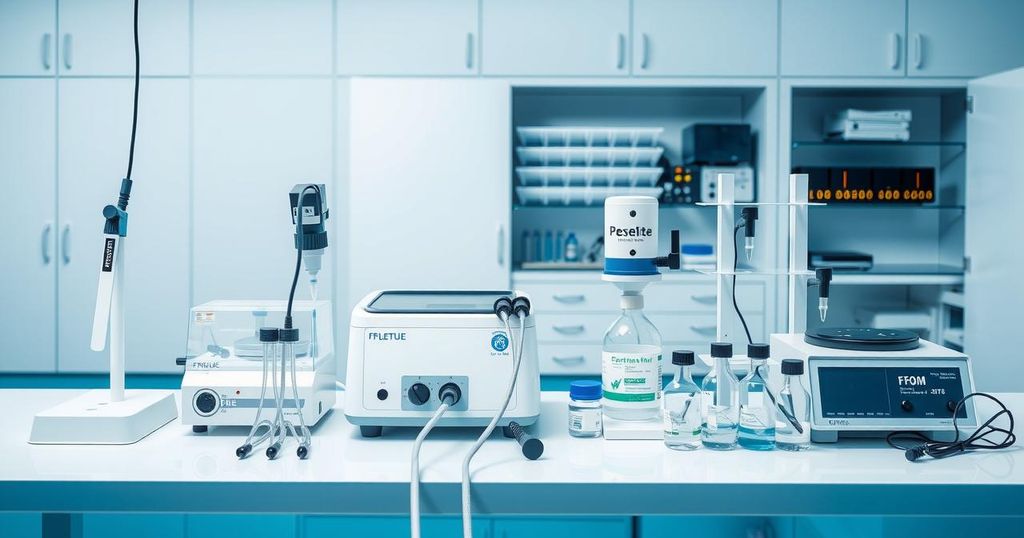Morocco Emerges as New Cobalt Giant Amid Rising Demand
- Morocco is becoming a new cobalt frontier as Catalyst Mines Inc. discovers potential resources.
- The Amassine Project shows significant promise for scalable cobalt production.
- Demand for cobalt is set to quadruple by 2030, affecting supply dynamics.
- Strategic logistics and partnerships enhance Morocco’s position in the market.
- Local communities stand to benefit from mining developments in the region.
Morocco Emerges as a Major Player in Cobalt Mining
Morocco is stepping into the spotlight as a new cobalt frontier, notably highlighted by Catalyst Mines Inc.’s latest discovery near the Berber village of Amassine. This site is geographically central to Morocco’s mineral-rich Anti-Atlas mountains, where hand-dug trenches have uncovered a geochemical treasure of cobalt and nickel-rich serpentinite, reporting ore grades potentially reaching up to 27% chromium. Such a significant find could potentially rewrite not just Morocco’s cobalt history, but also the global battery supply chain, as demand for electric vehicles surges and automakers seek more reliable, non-Congolese sources of cobalt, reducing their dependency on the Democratic Republic of Congo (DRC).
Amassine Project Shows Promise for Large-Scale Cobalt Production
For nearly a century, Morocco’s cobalt mining has revolved around the well-established Bou Azzer mine, known for its remarkable purity but limited output—approximately 1,500 tonnes of cobalt annually. This has kept Morocco in the global top-ten producers, but it falls far short of the DRC’s staggering production figures. In contrast, the Amassine Project boasts the potential for a much larger-scale operation, with surface mineralization suggesting prolonged mining viability and low-cost production. Initial trench samples have shown promising levels of minerals, raising hopes that this project will help fill the supply gap left by Bou Azzer’s diminishing reserves.
Strategic Logistics and Growing Demand for Cobalt
The logistical advantages of Amassine further enhance its appeal. Upcoming projects, like a US $100 million cobalt-sulphate refinery planned near Marrakech, are expected to yield 5,000 to 6,000 tonnes per year of battery-grade product starting in 2025, offering an eager market to process the mined cobalt. Free trade agreements with the European Union and the United States will also smooth out logistics, positioning Morocco as an alternative to the DRC and Indonesian supply chains. This is critical since the global demand for cobalt from electric vehicle batteries is projected to soar, creating a significant gap between supply and demand as early as 2024.
International Collaboration Shapes the Cobalt Landscape
Moreover, Morocco’s growing engagement with international players, especially from China, signals a shift in the landscape of cobalt production and supply chains. Chinese companies are busy establishing partnerships with local firms to develop the battery mineral ecosystem, which could solidify China’s foothold in the region and provide new avenues for investment and technology transfer. This shift illustrates a growing urgency among Western companies to supply their operations with ethically sourced minerals amid increasing regulations aimed at environmental sustainability and supply chain transparency. Catalyst Mines’ CEO Tyler Burpee aptly remarked that targeting minerals like cobalt, nickel, and chromium could unlock multiple revenue streams and give Morocco relevance on a global scale.
Potential Economic Impact on Local Communities
However, challenges remain. The development of Amassine must navigate geological complexities, regulatory frameworks, and infrastructure needs. Despite these hurdles, the potential benefits are vast—not just for Catalyst and its investors, but for local communities that could benefit from job creation and infrastructure development. As officials eye the success of Bou Azzer, the pattern is clear: bolstering Morocco’s industrial capacity in mining could anchor its position in the global market and transform its economy while addressing local employment needs through responsibly developed operations. A success story may just be on the horizon, reshaping the country’s economic landscape, and positioning Morocco as a formidable player in the global cobalt market.
In summary, Morocco’s emerging role in cobalt production, particularly through the Amassine Project, stands to redefine the region’s mining narrative. With significant mineral discoveries and strategic partnerships in place, the country could enhance its position in the global market, reducing dependency on the DRC. And if all goes as planned, Morocco might soon rise up in the ranks from a modest cobalt producer to a leading contender, aligning perfectly with current market dynamics and sustainability goals.




Post Comment